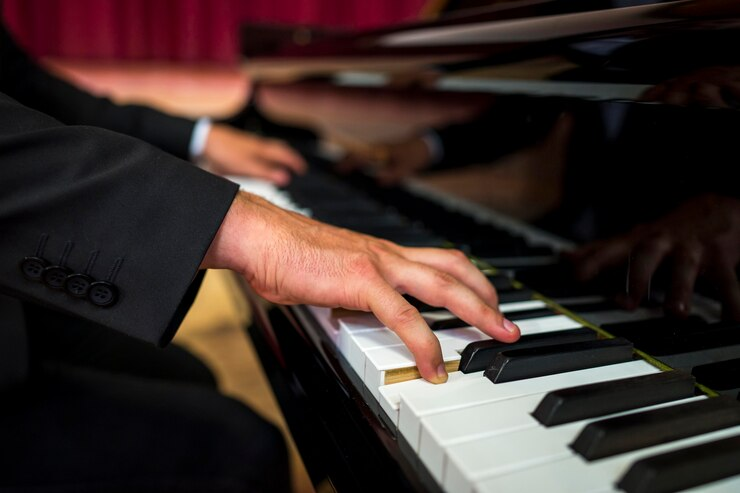The piano is among the most prominent and vital instruments in music history. It has been utilized in scores of genres amongst the many composers and listeners worldwide for almost three hundred years.
This instrument is a flexible yet expressive medium of musical creativity and communication — from classic masterpieces of Mozart, Beethoven, or Chopin to standard jazz melodies of Duke Ellington, Bill Evans, or Herbie Hancock and popular songs by Alicia Keys.
But what made the piano what it is today? What technological breakthroughs led it from humble beginnings through to the instrument of today’s world?
This article will explore three revolutionary innovations that shaped the modern piano: the invention of the piano itself, the industrial revolution and manufacturing, and the innovations in piano design.
Revolutionary Innovations That Shaped The Modern Piano
Invention Of the Piano
The piano evolved from ancient keyboard instruments like the organ, the harpsichord, and the clavichord. These instruments produced sound by plucking, striking, or blowing air through strings or pipes.
However, they had a significant limitation: This meant that, unlike today, where one can easily adjust the volume and dynamism of the sound, they could not do so. There were fixed stops for the sound intensity in the organ, while the organ and the clavichord could adjust their volumes to just two or less.
Cristofori’s Innovation: The Hammer Mechanism
Bartolomeo di Francesco Cristofori, a harpsichord maker from Italy, developed the initial piano in approximately 1700, overcoming this limitation. It was later known as gravicembalo col piano e forte, translated from Italian to the harpsichord, with soft and loud sounds.
However, Cristofori’s most significant invention was those hammers instead of having the strings plucked by fingers. Such hammers had a mechanism of falling backward following the strike, preventing the strings’ damping with them.
Because of this, you can quickly learn how to play piano. The hammer mechanism will allow you to control the volume and expression of the sound by varying the force and speed of the keystroke, thus enhancing your lessons.
Cristofori’s invention got very little recognition and appraisal in his lifetime. According to estimates, he built only about 20 pianos; only three remained in our days. They completed one in 1720; you can see it at the Metropolitan Museum of Art in New York.
The Industrial Revolution and Piano Manufacturing

The piano ignited the curiosity of musicians and instrument makers who endeavored to modify the same to enhance it. Nevertheless, making them was expensive, demanded experts’ help, and used expensive materials.
Nevertheless, the situation underwent a dramatic transformation with the advent of the Industrial Revolution during the late 18th and early 19th centuries. Newer technologies, like steam engines, railways, factories, and mass production methods, helped produce faster, cheaper, and more uniform pianos.
For example, an immigrant man from Germany founded a company in Manhattan known as “Steinway & Sons.” This company became one of the most influential piano manufacturers in 1853.
Steinway & Sons developed several improvements in piano production, such as providing iron plates to supplement wooden frames, utilizing cross-straining to boost the soundboard’s vibration, and implementing overstrung bass strings to produce smoother bass.
The company had over a hundred thousand grand pianos by 1900, making it one of the biggest piano manufacturers in history.
The Innovations in Piano Design

Piano production continued to inspire subsequent experiments in piano design to improve playability and sound. One of these breakthroughs was the innovation of using an iron frame that became a stipulation for constructing the modern piano instead of wood.
Iron was a more robust, sturdier frame, leading to higher string tension and volume output. Hence, there was a notable decrease in distortion/warping associated with humidity and temperature. It ensured that the pianos, as were the instruments needed for effective playing, were highly durable.
An English piano maker, Alpheus Babcock, patented the first iron frame in 1825. Nevertheless, it did not become popular until the middle of the 19th century, when American piano manufacturers, such as Jonas Chickering and Henry Steinway, improved their designs and production aspects.
This iron frame was the trademark of the modern pianos with long keys and strands that needed extra support.
The Double Escapement Mechanism
In 1821, a French piano maker named Sebastian Erad developed another innovation of the double escapement machinery for the grand pianos.
This innovation enabled the hammer to escape from the string with each strike rather than wait for the key to return to its upright position for another round of note repetitions. It enabled pianists to move more quickly and play the passage easily and with expressive nuances.
The double escapement system represented an advancement from the single escapement process in that the key had to be wholly released before the pivot hit. A single escapement slowed down accuracy, particularly in fast and loud passages.
The double escapement mechanism resolved this issue by using a spring-based tool to lift the string’s hammer, allowing for a quick strike after the key was depressed. Most modern grand pianos use the double escapement mechanism in their functioning.
Conclusion
The modern piano is an incredible instrument with technology built upon it for centuries. The piano’s history describes this instrument’s evolution through three groundbreaking innovations mentioned above.
These innovations have made it very flexible, more accessible, and more critical than before, allowing you to learn how to play it.



![[Industry Direct] Opening a New Chapter in VR Gaming – ‘The ChicKing Dead’ Enters Early Access! [Industry Direct] Opening a New Chapter in VR Gaming – ‘The ChicKing Dead’ Enters Early Access!](https://roadtovrlive-5ea0.kxcdn.com/wp-content/uploads/2025/04/2_CKD_Screenshots_1-640x360.jpg)



